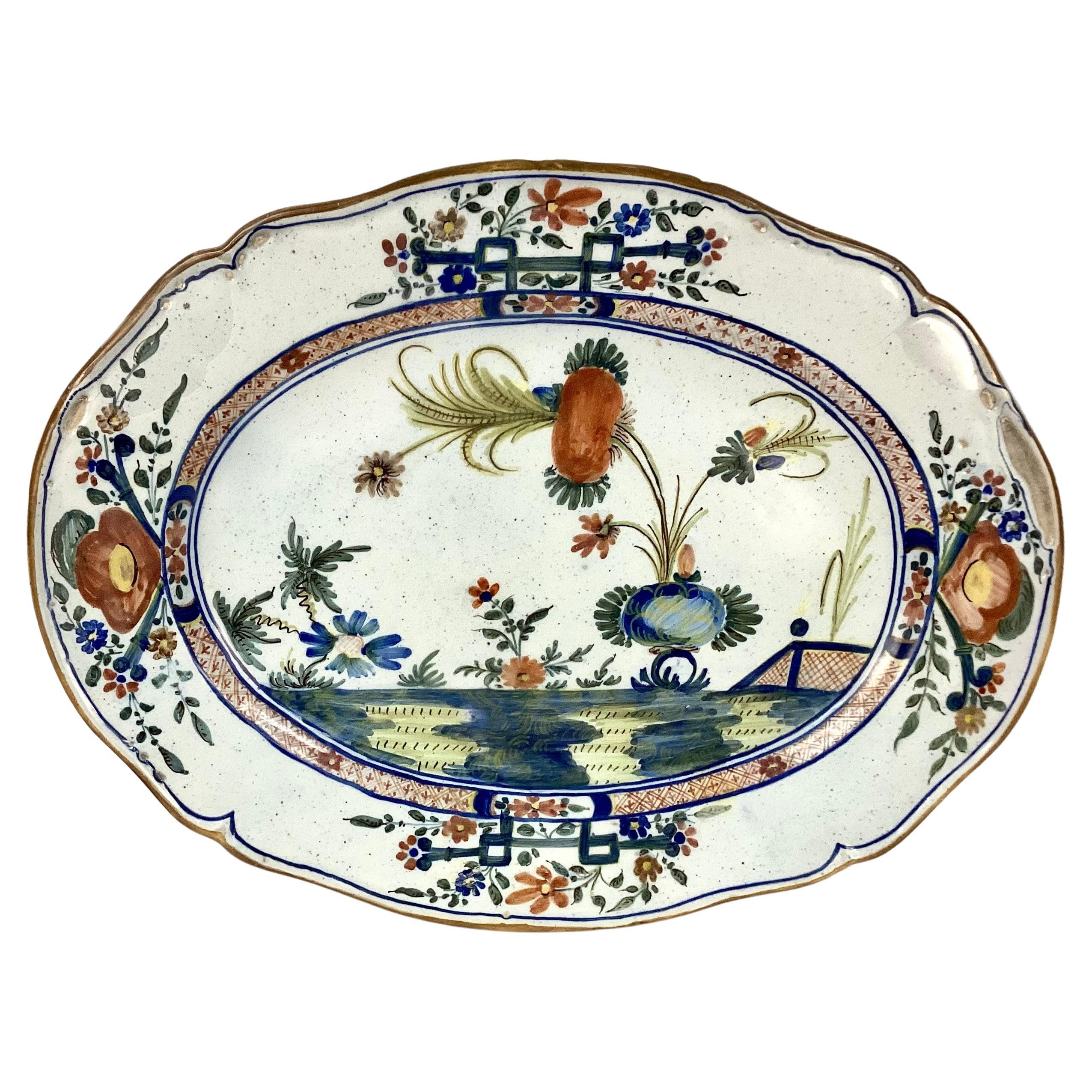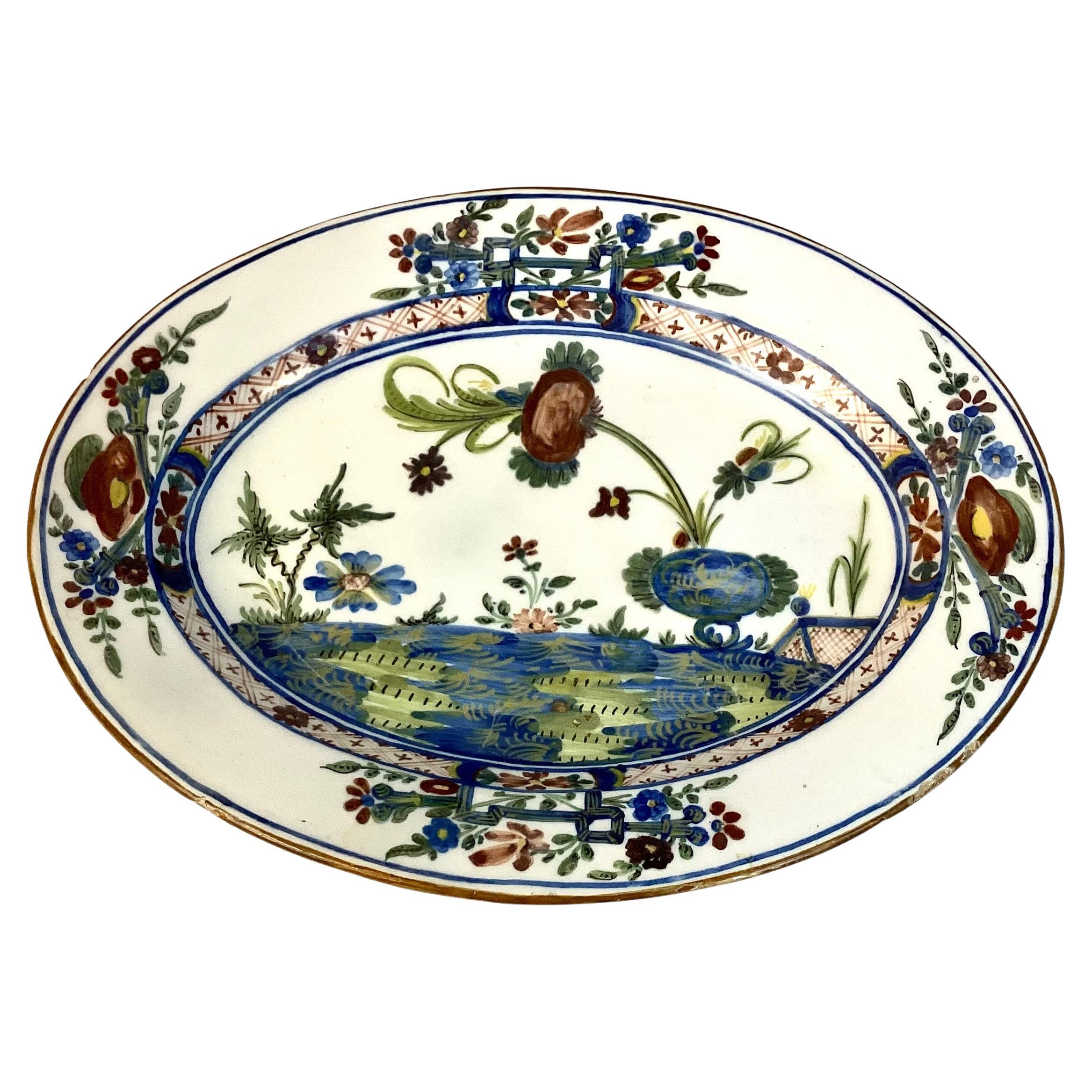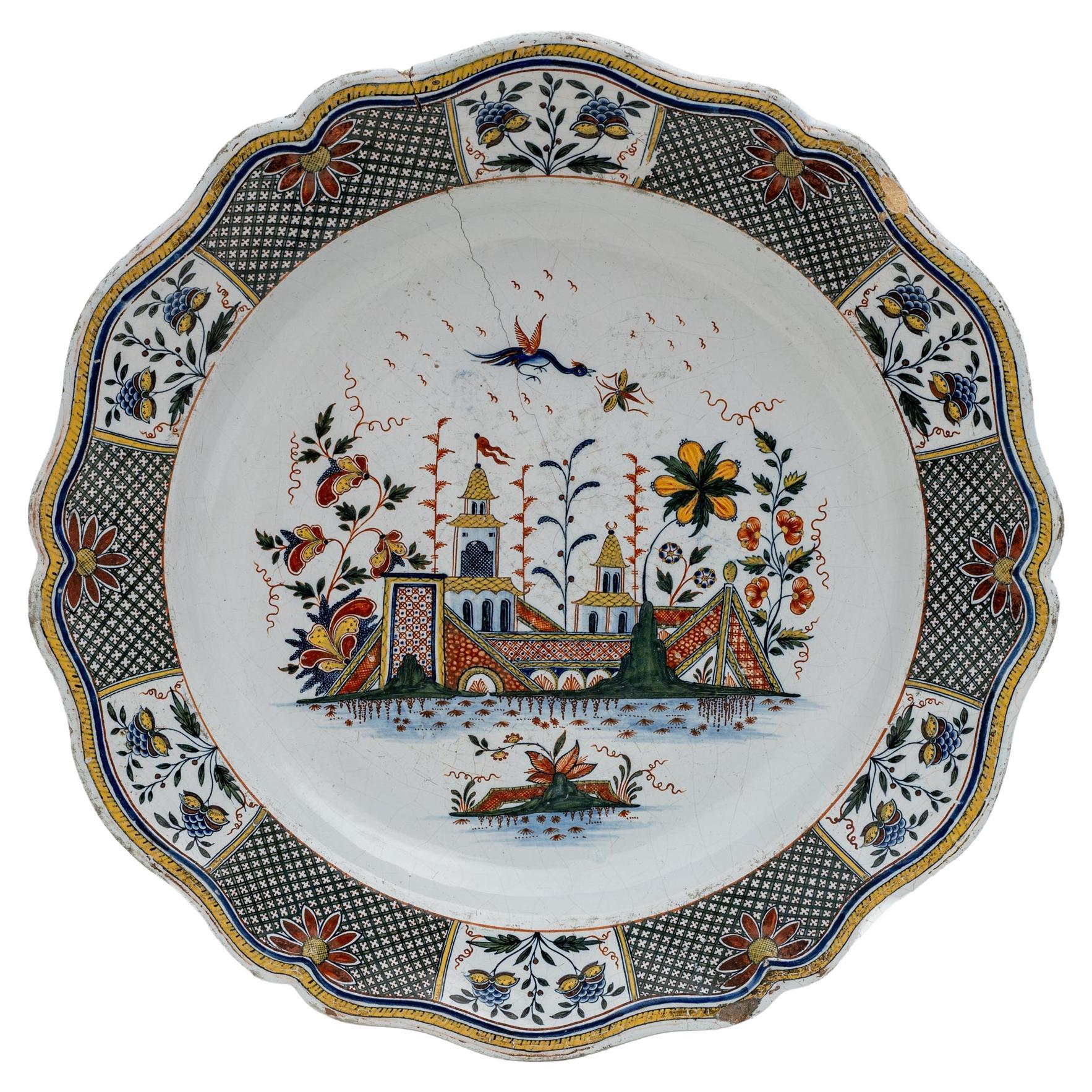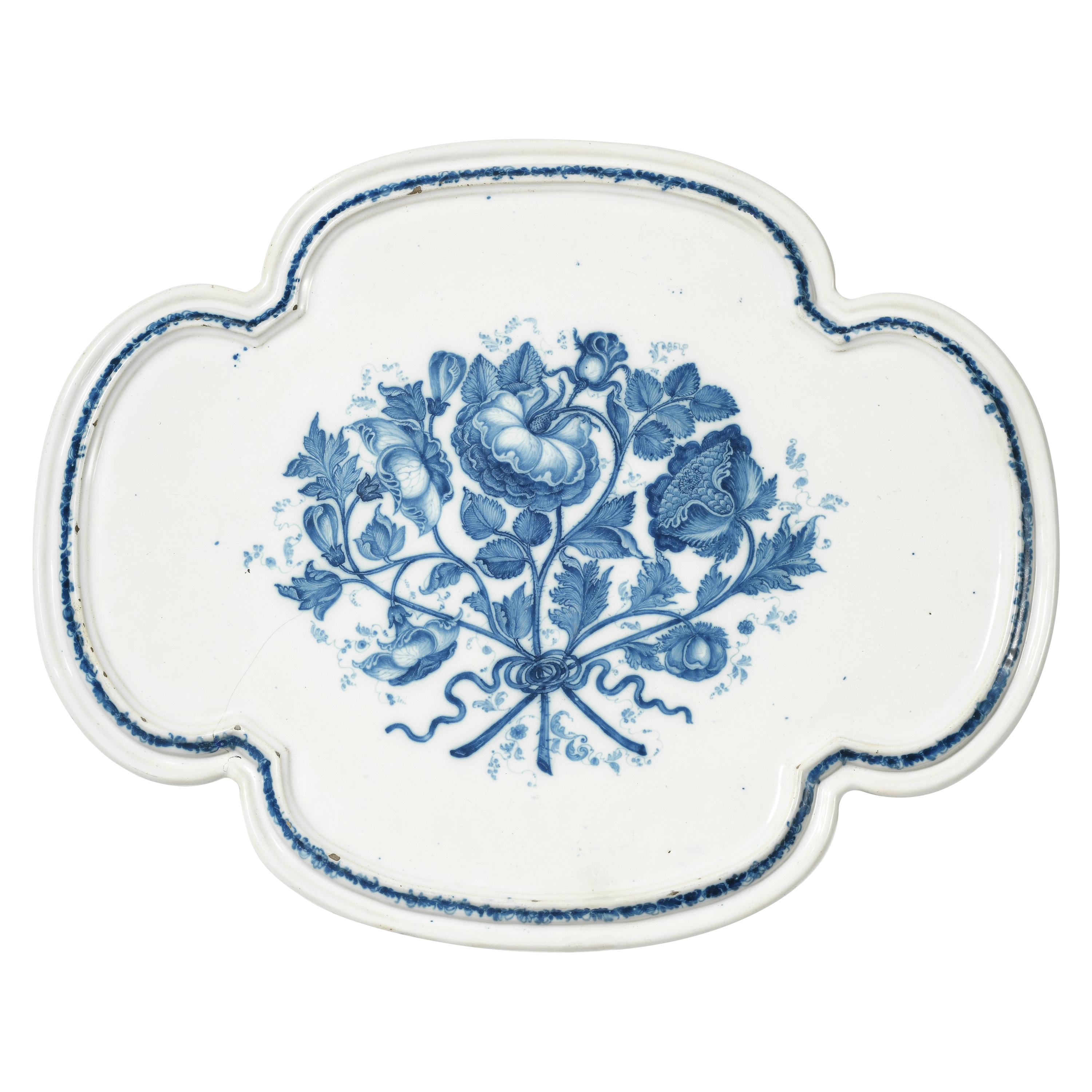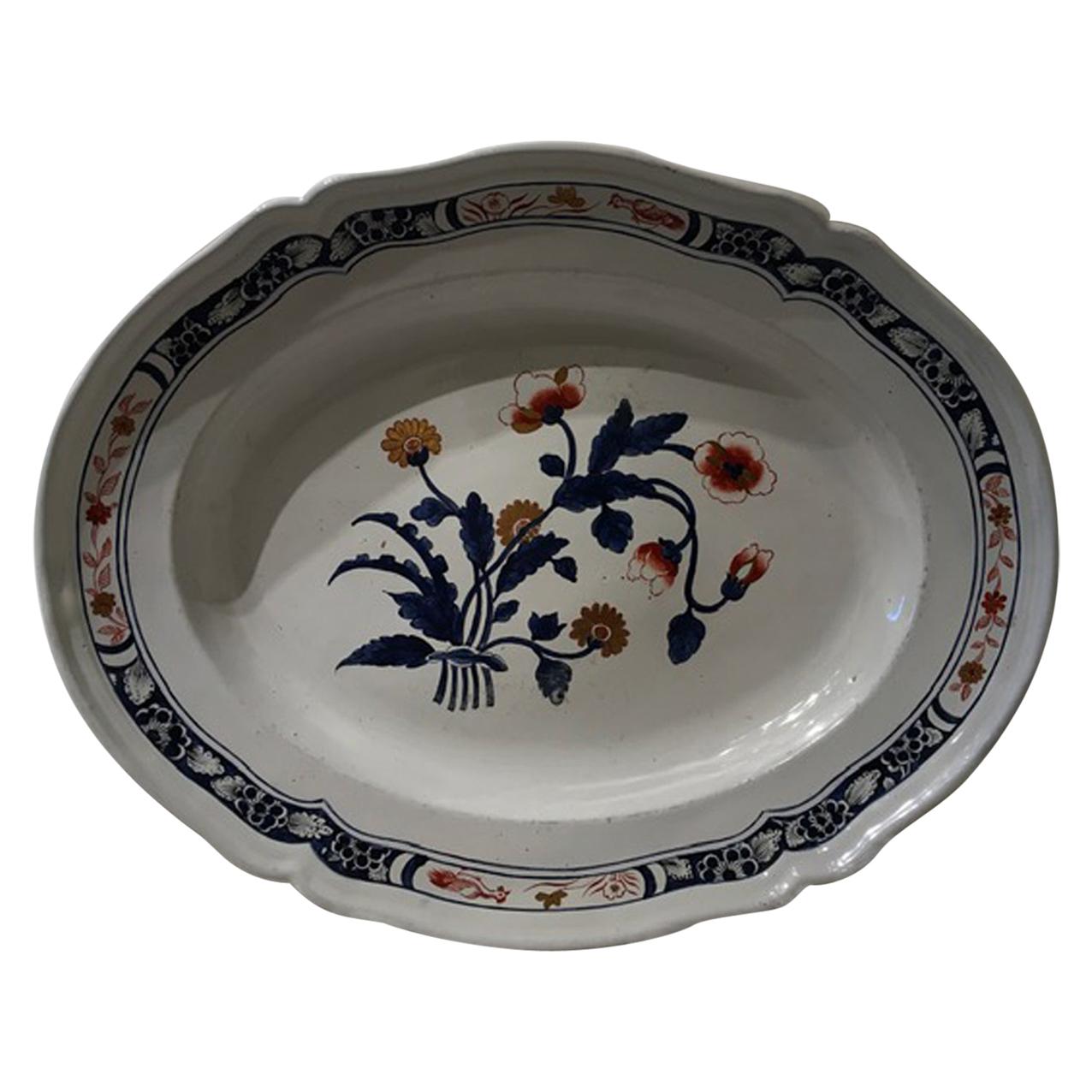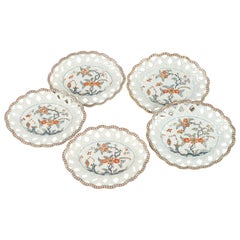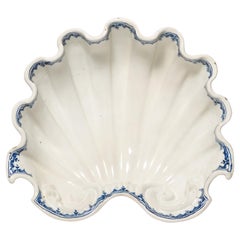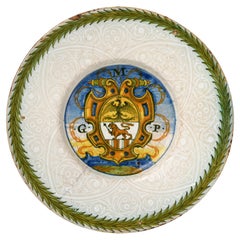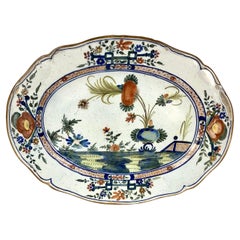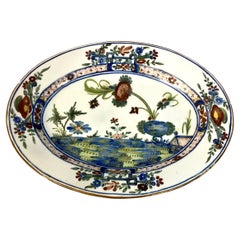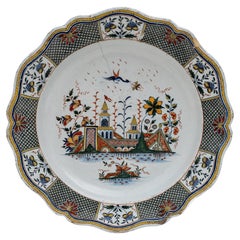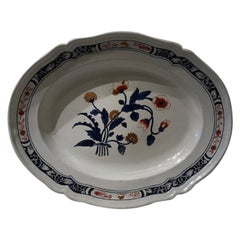Items Similar to Maiolica Oval Tray, Felice Clerici Manufactory, Milan, Circa 1770-1780
Video Loading
Want more images or videos?
Request additional images or videos from the seller
1 of 17
Maiolica Oval Tray, Felice Clerici Manufactory, Milan, Circa 1770-1780
$1,797.22
£1,337.66
€1,500
CA$2,461.74
A$2,737.99
CHF 1,429.69
MX$33,318.40
NOK 18,259.35
SEK 17,124.05
DKK 11,418.98
Shipping
Retrieving quote...The 1stDibs Promise:
Authenticity Guarantee,
Money-Back Guarantee,
24-Hour Cancellation
About the Item
Small oval tray
Felice Clerici Manufactory 1745-1780
Milan, Circa 1770-1780
Maiolica polychrome.
Dimensions: 10.82 x 8.66 in (27.5 x 22 cm); weight 0.4 lb (170 g)
State of conservation: the dish has been broken in half, but no additional paint has been applied to the surface. It also has a chip on the right edge.
The maiolica and porcelain factories of the eighteenth century mainly belonged to great royal or noble families who made the manufacture of ceramic works a motif of prestige. In Milan, under Maria Teresa of Austria, the time period witnessed a real opening to new industrialists who, by virtue of the privatizations granted by the government, assumed a real business risk, giving life, albeit not without conflict, to flourishing factories and to production which was among the most elegant and most requested at the moment and which still today remains object of collection. In Milan in the 18th century, two maiolica factories were active. The first was that of Felice Clerici, from 1745, and the second was opened by Pasquale Rubati in 1756, in competition with Felice, for whom he had been a worker. Upon Rubati's death, in 1796, the enterprise was continued for a few years under his son Carlo.
The shape and decoration of this tray belongs to the production of the Milanese manufacture of Felice Clerici and clearly documents not only an adherence to oriental-inspired decorative models, but also the accuracy of formal and iconographic research. As Raffaella Ausenda states, this is evident not only "in the decorative formula, but also in the appearance of the material" (R. Ausenda in R. Ausenda, Museo d’Arti Applicate, Le Ceramiche, Tomo II, Milano 2001, p. 235 n. 263, and related bibliography).
The tray has an oval shape and a mixtilinear edge. It is coated with slightly blue enamel and the decoration, except for the thin manganese line on the edge, is done entirely in cobalt blue.
In the center of the well, the highly refined decoration shows a composition with a tall vase on a pedestal accompanied by books, scrolls, containers, ribbons and lotus flowers, as well as a butterfly with Western characteristics. This is much closer to the Clerici specimens than to the original Chinese ones. An open band on the flounce introduces the wide and wavy brim, in turn decorated with peach blossoms in groups of three, arranged at the cardinal points.
This decorative subject, which finds illustrious precedents in many Chinese specimens, and which was also interpreted by the factories of Delft and Rouen, is known in Chinese art as "decoration of the hundred antiquities" (po-ku), a definition with which they indicated one hundred objects with a strong symbolic weight. The gu vase with a branch of flowers is generally linked to qi, the vital energy; the container from which the ribbons come out refers to the ancient ceremonial vases that symbolize piety and respect for ancestors. The stacks of bound books and scrolls remind us of the importance of calligraphic art, writing and study, activities of fundamental importance for the literate.
This rare Milanese production is characteristic of Felice Clerici's factory and is comparable with some published examples. A precise comparison is represented by a specimen (inv. 1726) kept at the Museum of Applied Arts at Castello Sforzesco in Milan (R. Ausenda in R. Ausenda, Museo d’Arti Applicate, Le Ceramiche, Tomo II, Milano 2001, pp. 233-235 n. 263, and related bibliography).
Bibliography:
R. Ausenda in R. Ausenda, Museo d’Arti Applicate, Le Ceramiche, Tomo II, Milano 2001, pp. 233-235 n. 263, and related bibliography.
- Creator:Felice Clerici (Manufacturer)
- Dimensions:Height: 0.99 in (2.5 cm)Width: 8.67 in (22 cm)Depth: 10.83 in (27.5 cm)
- Style:Rococo (Of the Period)
- Materials and Techniques:Maiolica,Glazed
- Place of Origin:
- Period:1770-1779
- Date of Manufacture:circa 1770-1780
- Condition:Repaired: The dish has been broken in half, but no additional paint has been applied to the surface. It also has a chip on the right edge. Minor structural damages.
- Seller Location:Milano, IT
- Reference Number:1stDibs: LU4352227849252
About the Seller
4.3
Vetted Professional Seller
Every seller passes strict standards for authenticity and reliability
Established in 1860
1stDibs seller since 2018
21 sales on 1stDibs
Associations
International Confederation of Art and Antique Dealers' Associations
- ShippingRetrieving quote...Shipping from: Milano, Italy
- Return Policy
Authenticity Guarantee
In the unlikely event there’s an issue with an item’s authenticity, contact us within 1 year for a full refund. DetailsMoney-Back Guarantee
If your item is not as described, is damaged in transit, or does not arrive, contact us within 7 days for a full refund. Details24-Hour Cancellation
You have a 24-hour grace period in which to reconsider your purchase, with no questions asked.Vetted Professional Sellers
Our world-class sellers must adhere to strict standards for service and quality, maintaining the integrity of our listings.Price-Match Guarantee
If you find that a seller listed the same item for a lower price elsewhere, we’ll match it.Trusted Global Delivery
Our best-in-class carrier network provides specialized shipping options worldwide, including custom delivery.More From This Seller
View All18th Century Italian Maiolica Centerpiece Bassano Venice, circa 1750
Located in Milano, IT
Maiolica centerpiece
Pasquale Antonibon factory
Nove di Bassano, Venice, 1740-1770.
Measures: 1.85 in x 19.21 in x 15.27 in
4.7 cm X 48.8 cm X 38.8 cm.
lb 5.29 (kg 2.4)
State of conservation: thin passing fêlure with covered chipping and a glued foot
The Antonibon were an important family of Venetian...
Category
Antique 1750s Italian Baroque Ceramics
Materials
Maiolica
Ancient Maiolica Plates Pasquale Rubati, Milan Circa 1770-1780
By Pasquale Rubati
Located in Milano, IT
Five oval maiolica dishes with pierced edge
Manufacture of Pasquale Rubati
Milan, 1770-1780
Three small oval dishes 10.23 in x 7.67 in (26 cm x 19.5 cm)
Two large oval dishes 10.82 in x 8.85 in (27.5 x 22.5 cm)
lb 3.5 (kg 1.8)
State of conservation: intact
The five dishes of different sizes have an oval shape, a mixtilinear edge and a molded polylobed shape with a surface enriched with a relief weave motif extending to the brim and forming a perforated basket...
Category
Antique 1770s Italian Rococo Ceramics
Materials
Maiolica
Ancient Italian Maiolica Faenza, Ferniani Factory, Circa 1700
By Ferniani Factory
Located in Milano, IT
Centerpiece white maiolica shell
Ferniani factory, early period: 1693-1776
Faenza, circa 1700
Measures: 5.6 in x 14.72 in x 13.46 in (14.3 cm x 37.4...
Category
Antique Early 1700s Italian Baroque Ceramics
Materials
Maiolica
Small Maiolica Plate, Urbino District, 1533-1555
Located in Milano, IT
Maiolica plate (tondino)
Urbino district, Casteldurante or Pesaro, 1533-1555
It measures: diam. 7.48 in (19 cm), foot diam. 2.75 in (7 cm), height 1.0...
Category
Antique 16th Century Italian Renaissance Ceramics
Materials
Maiolica
Ancient Italian Maiolica Faenza, Ferniani Factory, Circa 1700
By Ferniani Factory
Located in Milano, IT
Centerpiece light blue maiolica shell
Ferniani factory, early period: 1693-1776
Faenza, 1700 circa
5.5 in x 14.72 in x 13.77 in (14 cm x 37.4 cm X cm 35)
lb 4.40 (kg 2)
State of con...
Category
Antique Early 1700s Italian Baroque Ceramics
Materials
Maiolica
Three Dishes, Antonio Maria Coppellotti Factory, Lodi, Italy, Circa 1745
By Antonio Maria Coppellotti
Located in Milano, IT
Pair of round dishes and a small oval tray
Antonio Maria Coppellotti factory
Lodi, circa 1745
High fire polychrome majolica
Dishes size: diameter 9.44 in, height 0.78 in (24 cm, 2 c...
Category
Antique 1740s Italian Rococo Delft and Faience
Materials
Maiolica
You May Also Like
Large 19th Century Italian Faenza Garofano Platter
Located in Bradenton, FL
Large 19th Century Italian Faience Serving Platter. Platter in Faenza Garofano Blue Carnation pattern features flora in colors of blue, green, brown on a white background. Solid whit...
Category
Antique 19th Century Italian Rococo Platters and Serveware
Materials
Ceramic
19th Century Italian Faenza Garofano Serving Platter
Located in Bradenton, FL
Large 19th Century Italian Ceramic Serving Platter. Platter in Faenza Garofano Blue Carnation pattern features flora in colors of blue, green, brown on a white background. Solid whit...
Category
Antique 18th Century Italian Rococo Platters and Serveware
Materials
Ceramic
Large Majolica Dish France Rouen Manufactory of Jean-Baptiste Guillibaud, 1730
Located in Puglia, Puglia
Big dish.
France, Rouen, Manufactory of Jean-Baptiste Guillibaud, around 1730.
Majolica. Brand: "Gb" linked in italics, in blue.
Diameter 44 cm. Conservation: flaking recomposed in o...
Category
Antique 1730s French Rococo Platters and Serveware
Materials
Maiolica
$2,935 Sale Price
30% Off
Italy Richard Ginori Late 18th Century Porcelain Tray Underplate
By Richard Ginori
Located in Brescia, IT
This elegant and glamorous porcelain tray ispainted with one of the most iconic decor of Richard Ginori in red and blue. This kind of decor inspired by Oriental thought is called ...
Category
Antique Late 18th Century Italian Baroque Porcelain
Materials
Porcelain
$1,437 Sale Price
20% Off
French Faience Handled Platter Botanical Saint Clement, circa 1900
By Saint-Clément
Located in Austin, TX
French Faience Handled Platter Botanical signed Saint Clement, circa 1900.
Category
Antique Early 1900s French French Provincial Dinner Plates
Materials
Ceramic
Meissen Oval Platter of Wide in Onion Pattern, 19th Century
By Meissen Porcelain
Located in Delft, NL
Meissen oval platter of 55 cm wide in onion pattern, 19th century
Germany, marked with the crossed swords, since 1815
The measurements are 5...
Category
Antique Mid-19th Century German Platters and Serveware
Materials
Porcelain
More Ways To Browse
Broken Ceramics
Oval Still Life
Calligraphy Ceramics
Stackable Trays
Chinese Silver Tray
Austrian Rococo
Painted Oval Trays
Austrian Rococo Furniture
Silver Enamel Butterfly
Blue Cobalt Glass Dish
Delft Blue China
Delft Dish
Flower Porcelain Tray
Butterfly Tray
Silver Pedestal Dish
Porcelain Butterfly Dish
Butterfly Under Glass
1745 Glass
